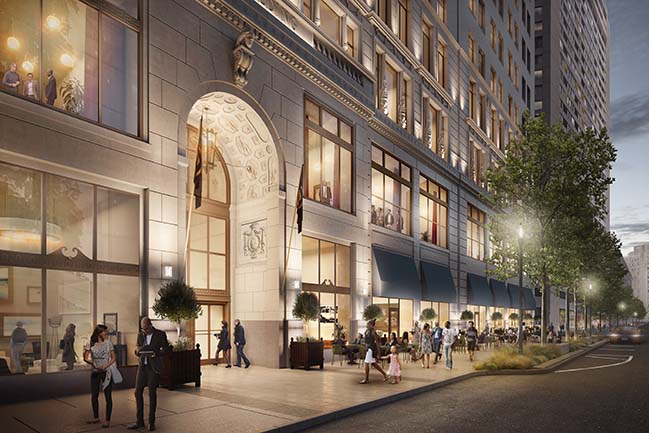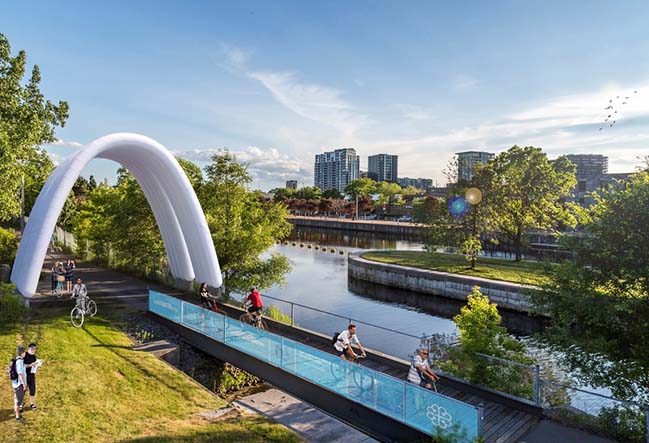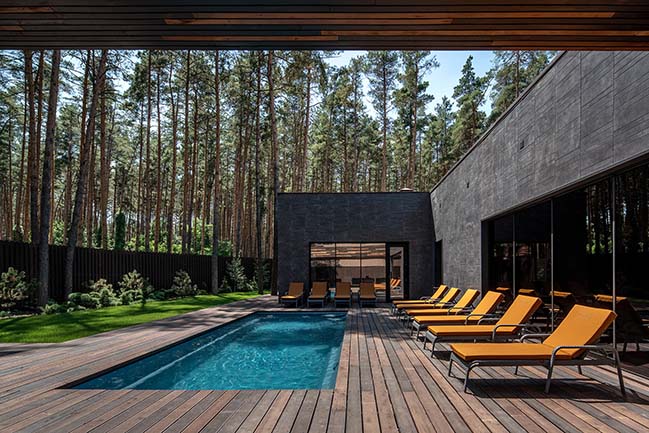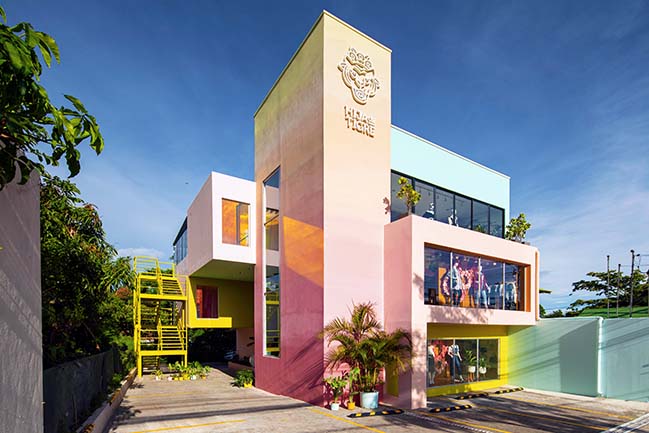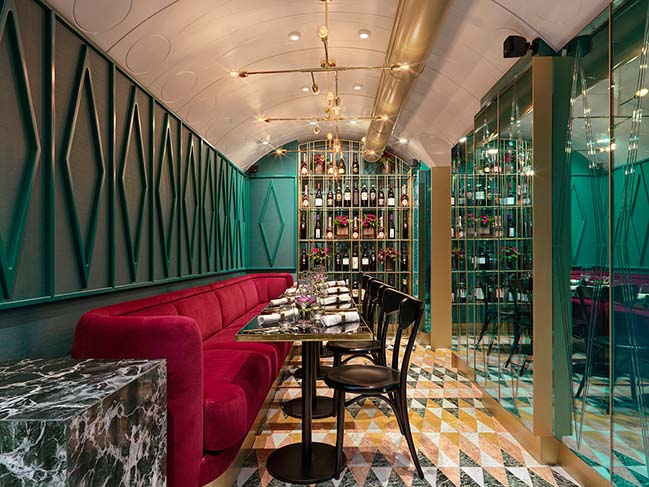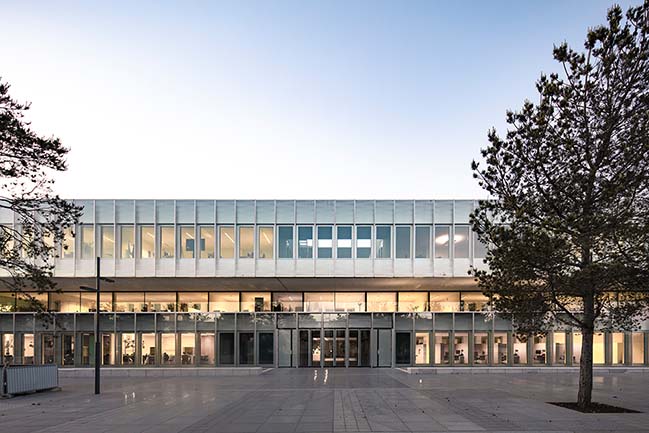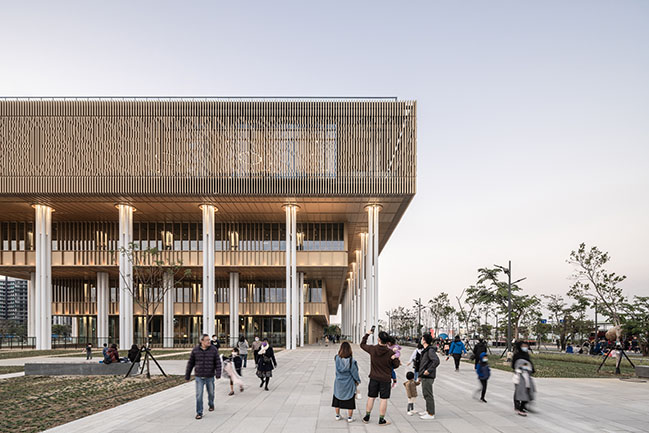09 / 05
2019
Snøhetta Completes Powerhouse Brattørkaia - the World's Northernmost Energy-Positive Building.
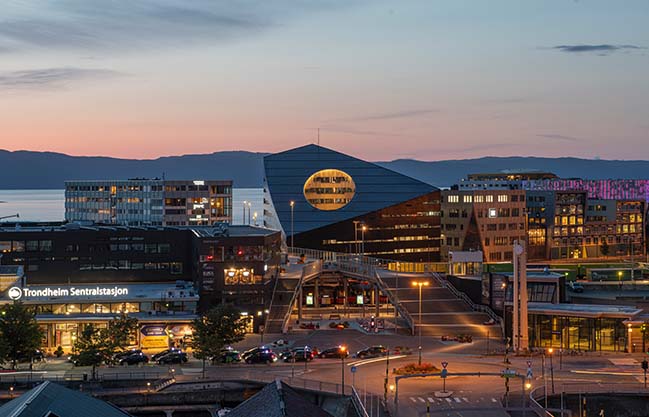
© IVAR KVAAL
Architect: Snøhetta
Client: Entra
Location: Brattørkaia 17, Trodnheim, Norway
Year: 2019
Gross area: 17,800 sq.m.
Total solar panel surface: 2,867 sq.m.
Energy Performance: 458,457 kWh per year
Collaborators: Powerhouse - a collaboration of industry partners Entra, Skanska, ZERO, Snøhetta and Asplan Viak
Certification: BREEAM Outstanding
Photography: IVAR KVAAL, Synlig.no
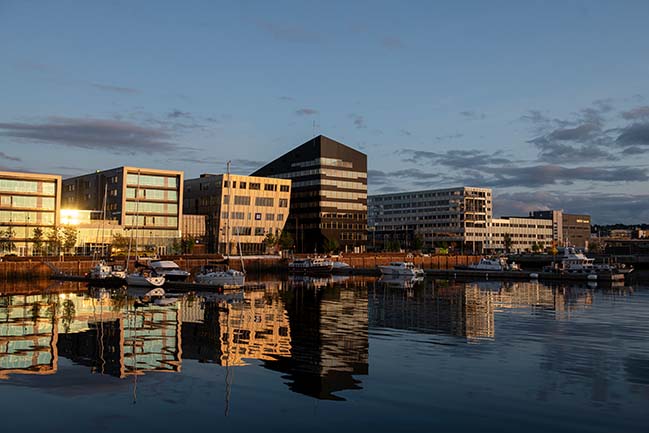
© IVAR KVAAL
From the architect: The energy sector and building industry accounts for over 40 % of global industry’s heat-trapping emissions combined, according to the World Resources Institute. As the world’s population and the severity of the climate crisis continue to grow, we are challenged to think how to build responsibly – creating high quality spaces for people while also reducing our environmental footprint. As the world’s northernmost energy-positive building, Powerhouse Brattørkaia aims to set a new standard for the construction of the buildings of tomorrow: one that produces more energy than it consumes over its lifespan, including construction and demolition.
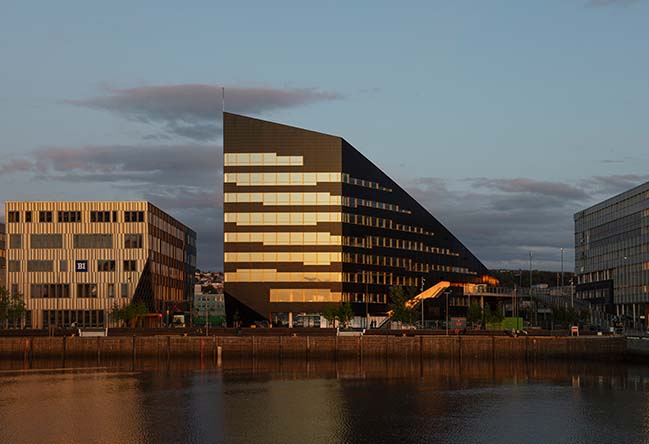
© IVAR KVAAL
Thursday, September 5, 2019 — Powerhouse Brattørkaia is located in Trondheim, Norway, 63° north of the Earth’s equator, where sunlight varies greatly between the seasons. This presents a unique opportunity to explore how to harvest and store solar energy under challenging conditions. The 18 000 m^2 office building is situated by the harbor and connects to Trondheim Central Station via a pedestrian bridge on the rear end of the building. The waterfront façade is the slimmest face of the building, allowing the project to be read at a similar scale with its neighbors. Clad with black aluminum and solar panels, the façade is reflected in the adjacent Trondheim Fjord.
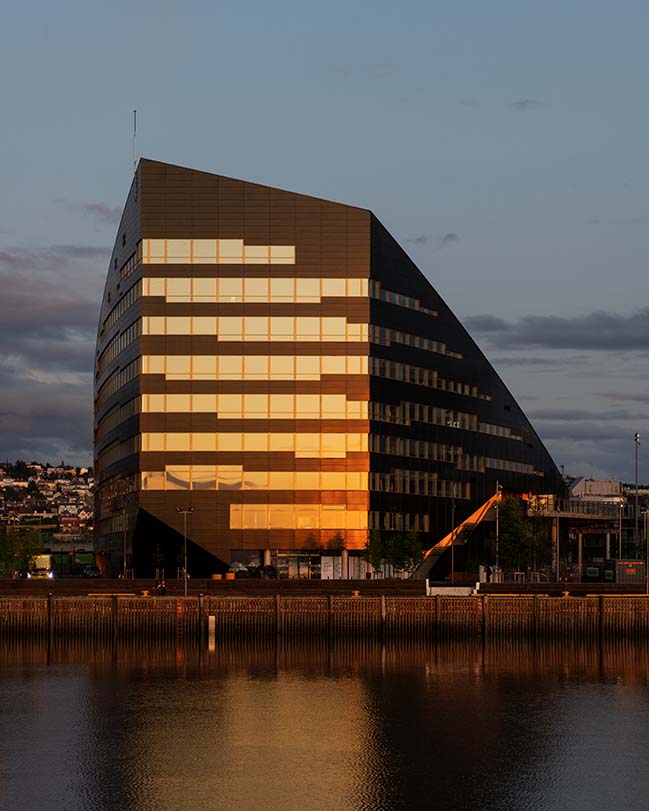
© IVAR KVAAL
“Energy-positive buildings are the buildings of the future. The mantra of the design industry should not be ‘form follows function’ but ‘form follows environment’. This means that the design thinking of today should focus on environmental considerations and reducing our footprint first, and have the design follow this premise,” says Snøhetta Founder Kjetil Trædal Thorsen.
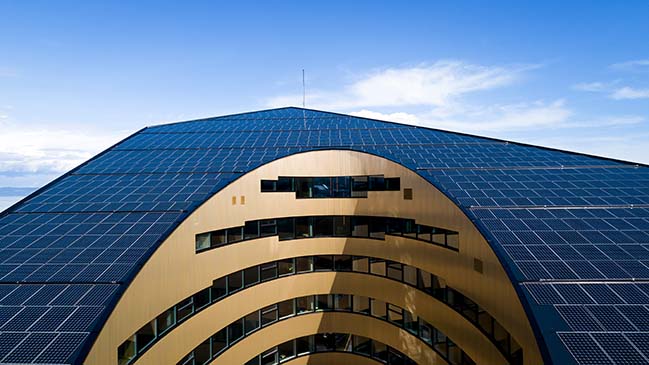
© Synlig.no
On average, Powerhouse Brattørkaia produces more than twice as much electricity as it consumes daily, and will supply renewable energy to itself, its neighboring buildings, electric buses, cars and boats through a local micro grid.
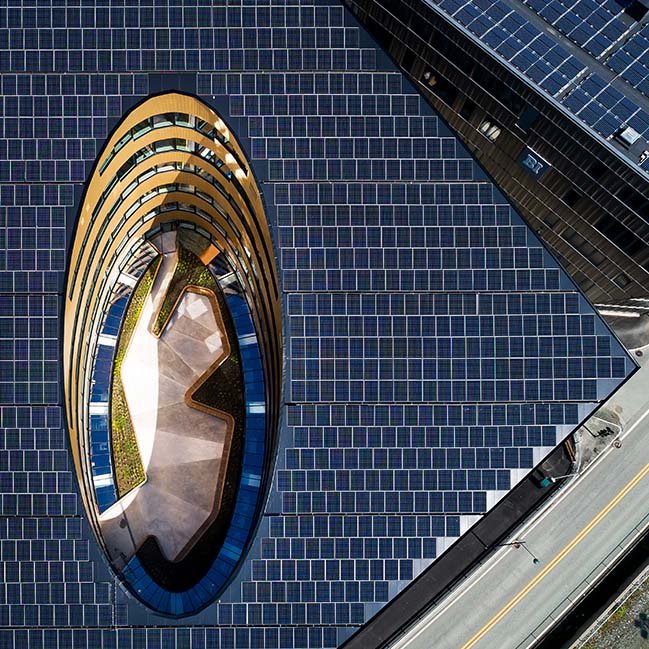
© Synlig.no
The aim of the project is threefold; to maximize the amount of clean energy produced by the building, to minimize the energy required to run it, and to serve as a pleasant space for its tenants and the general public. The building’s site has been carefully chosen to ensure maximum exposure to the sun throughout the day and seasons. Its skewed, pentagonal roof and the upper part of the façade is clad with almost 3 000 m^2 of solar panels, strategically placed to harvest as much solar energy as possible. Over a year, this amounts to a total of about 500 000 kWh with clean, renewable energy. In effect, the building dually functions as a small power plant in the middle of the city. Ample space for energy storage is built into the building footprint, allowing it to store surplus energy in the summer months of near total daylight, to then use it in the winter months when daylight is at a minimum.
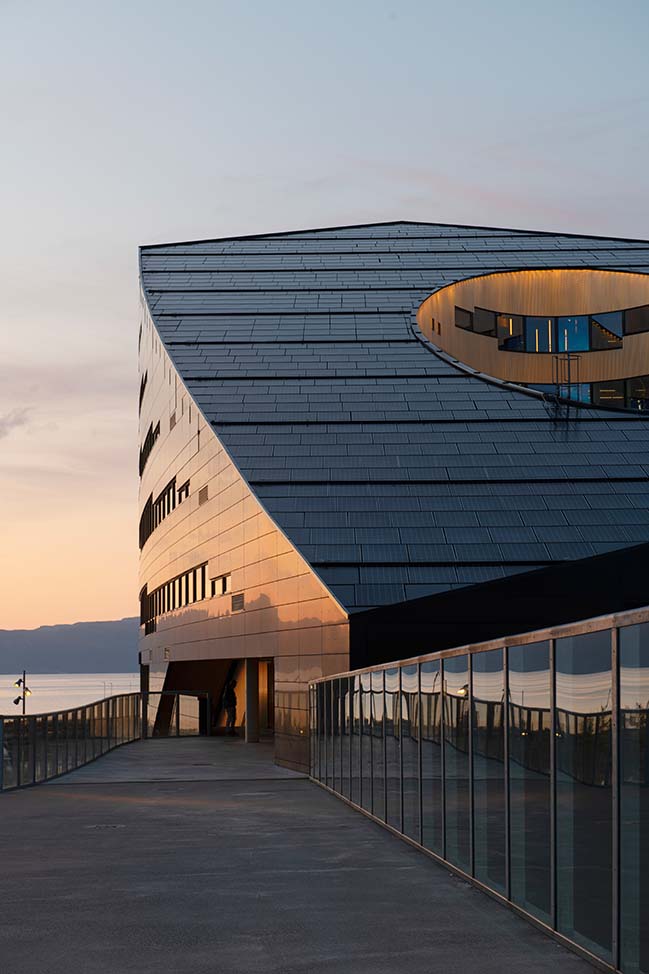
© IVAR KVAAL
The building is extremely energy efficient, leveraging a series of technologies to radically reduce energy use for its daily operations. This is accomplished through insulating the building for maximum efficiency, installing intelligent solutions for air flow to reduce the need for heating, heat recovery solutions for ventilating air and greywater (wastewater from all sources except toilets), using seawater for heating and cooling and implementing only energy efficient electrical appliances. Daylight conditions are optimized throughout the building design and artificial light use is kept at a minimum.
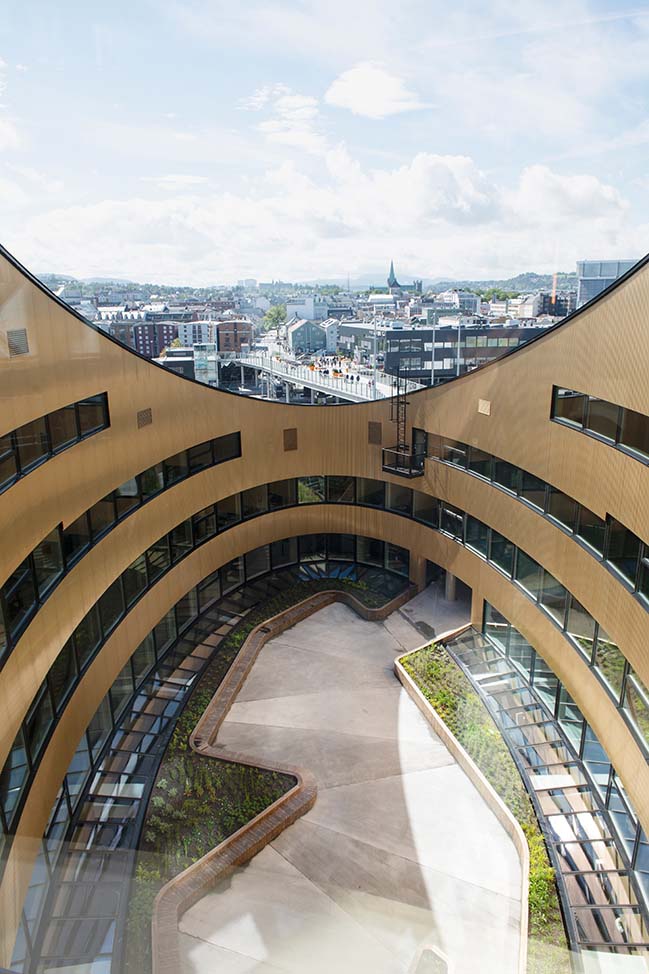
© IVAR KVAAL
For humans to continue to live and thrive on this planet, and in the buildings we inhabit and spend most of our lives in, these need to be built with as much consideration for natural preservation and energy efficiency as for the comfort of the people inside them. As the world’s northernmost energy-positive building, Powerhouse Brattørkaia is setting an example for responsibly constructing our homes and office spaces for the future.
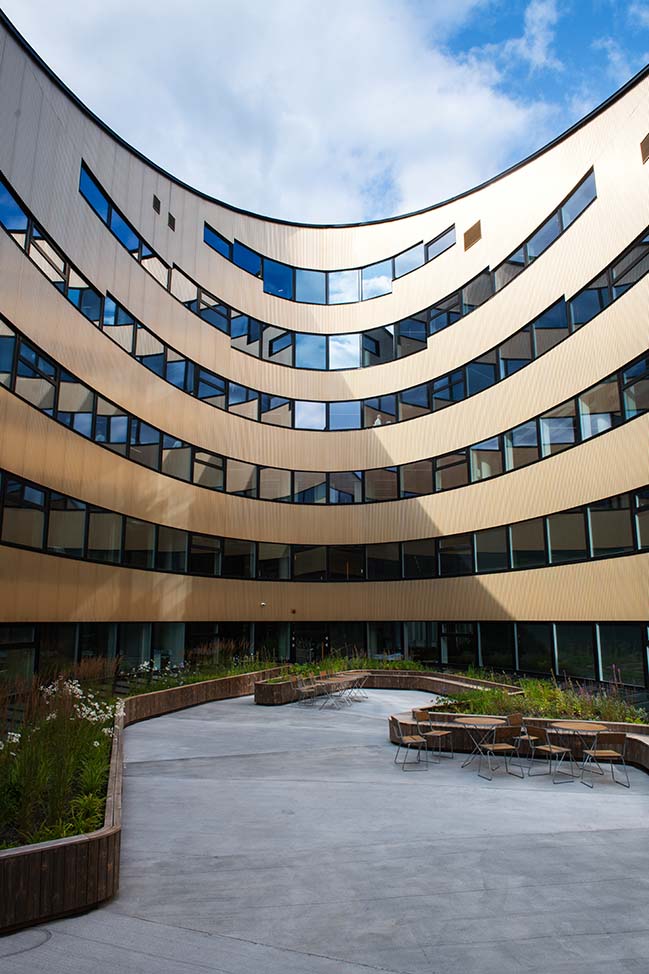
© IVAR KVAAL
An Inviting Atrium of Light
Viewed from the harbor front, the building façade’s sides cants inwards, bringing associations to how the building is bursting with energy. From the opposite approach, the sloping roof of the building reveals a cutout in the center of its plan that allows daylight to flow into the office spaces. Within this illuminated core is an atrium that functions as a public garden with horizontal glass windows on the sides, providing skylight into the below canteen. This skewed lightwell allows daylight to enter the building on every floor, and gives the people working inside a great view of the city. The atrium also limits the amount of artificial light needed inside the building. Large glass windows and pleasant open spaces flooded with daylight contribute a comfortable and inviting work environment.
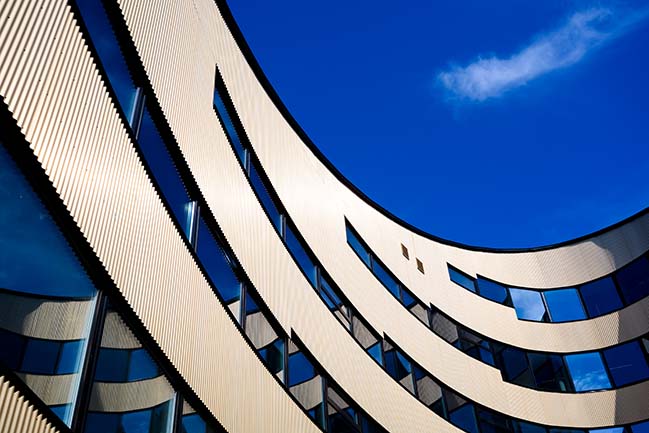
© Synlig.no
In order to reduce energy use on lighting, the building employs a concept called “liquid light”, which allows the artificial light to smoothly dim up and down according to the activity and movement in the building. Taken together, these strategies allow Powerhouse Brattørkaia to consume only about half the amount of energy for lighting than a typical commercial office building of comparable size would.
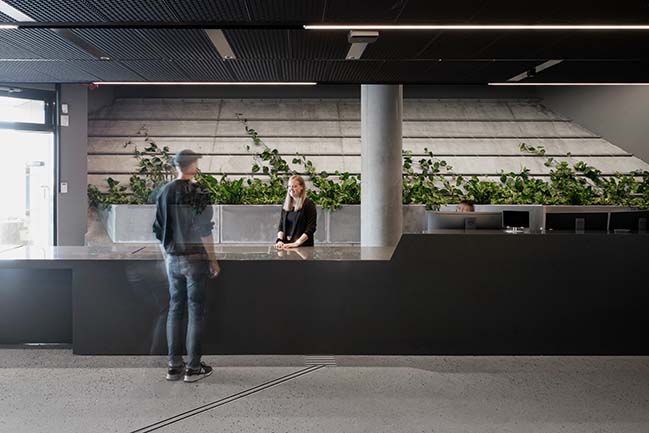
© IVAR KVAAL
The building provides office spaces for a diversity of commercial tenants, including construction and shipping firms, while also housing a significant public program. A café and a visitor center at the ground floor are open to the people of Trondheim as an educational resource for school groups and the general public alike. The visitor center explicates the energy concept of the Powerhouse and supports public knowledge and discourse on sustainable building strategies for the future.
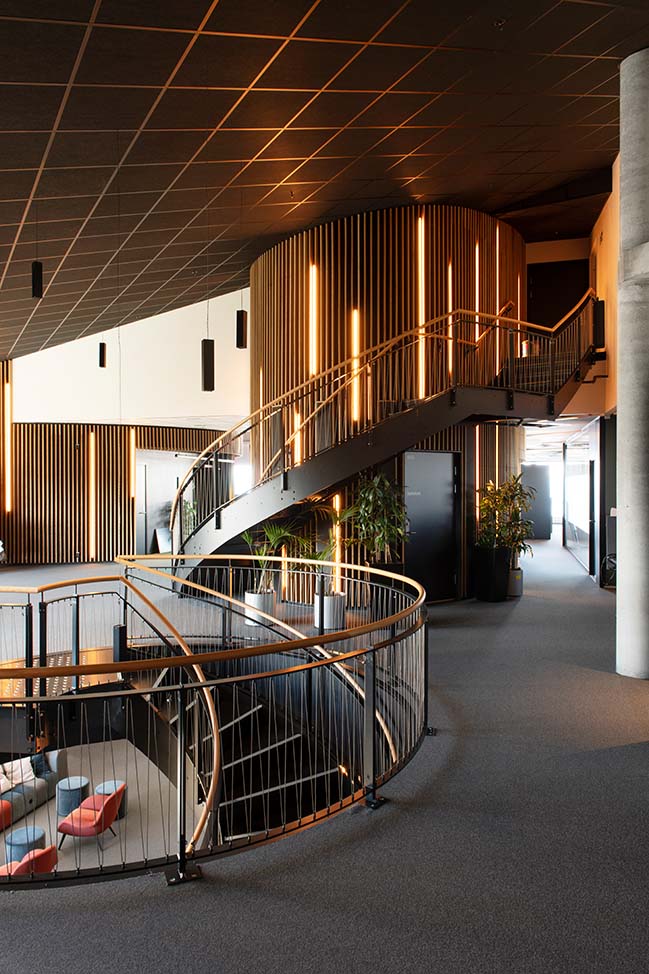
© IVAR KVAAL
Ventilation and Heating Technologies
The Powerhouse prioritizes the physical comfort and well-being of the building’s occupants with strategies that balance its focus on fresh air and thermal comfort with extreme energy-efficiency. The ventilation system provides pleasant and clean air to the indoor spaces and accommodates Trondheim’s mild and humid climate. The office landscape contains technical installations for air supply that regulate ventilation. The air is let out close to the floor at low speed, while the extraction takes place centrally by suppression in the stair shafts. Further, the building’s structural system consists of thermal mass – low-emission concrete – which is exposed through strategic cutouts in the ceiling. The mass absorbs and retains heat and cold and helps regulate the temperature in the building without using electricity.

© IVAR KVAAL
For its efforts, Powerhouse Brattørkaia has received the BREEAM Outstanding certification, the highest possible ranking by the world’s leading sustainability assessment method for an asset’s environmental, social and economic sustainability performance. Its solutions support the UNFCCC Paris Agreement that pursues efforts to limit the global temperature increase to 1.5 degrees Celsius.
> VIEW MORE SNOHETTA'S PROJECTS
> VIEW MORE ARCHITECTURE IN NORWAY
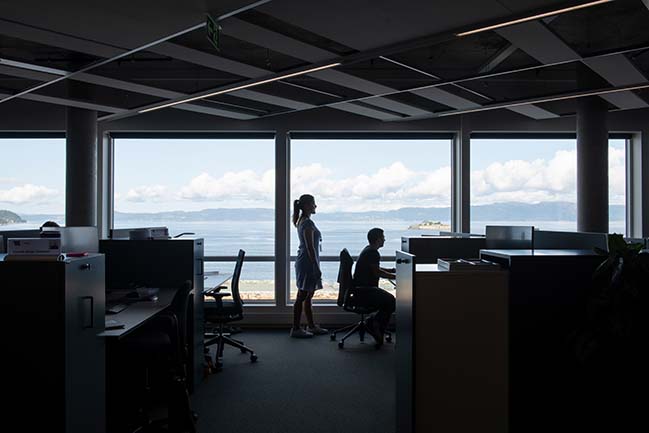
© IVAR KVAAL
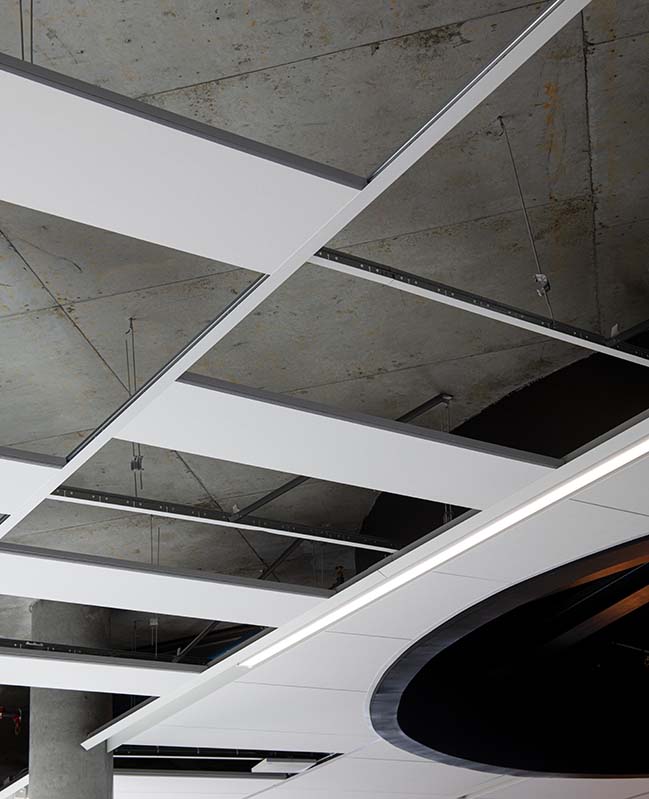
© IVAR KVAAL
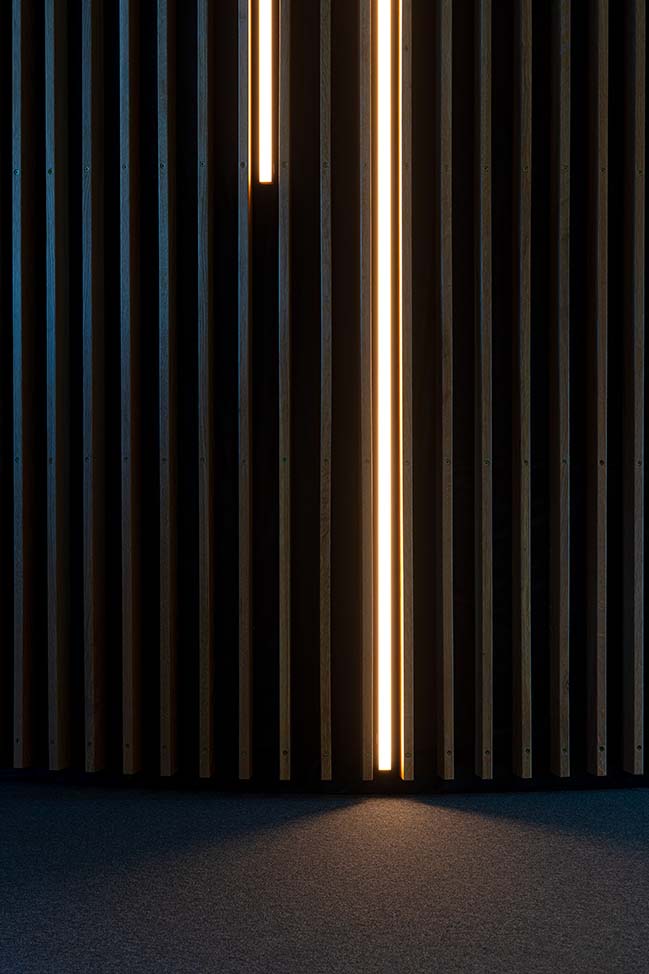
© IVAR KVAAL
YOU MAY ALSO LIKE: Snøhetta completes Europe's First Underwater Restaurant
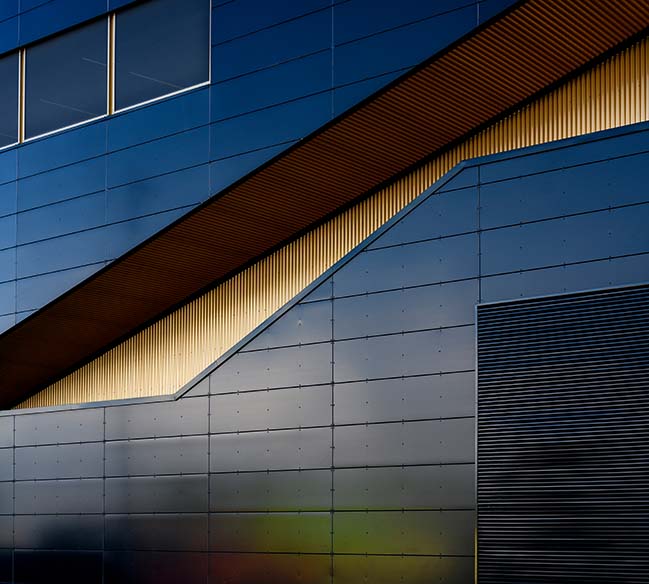
© Synlig.no
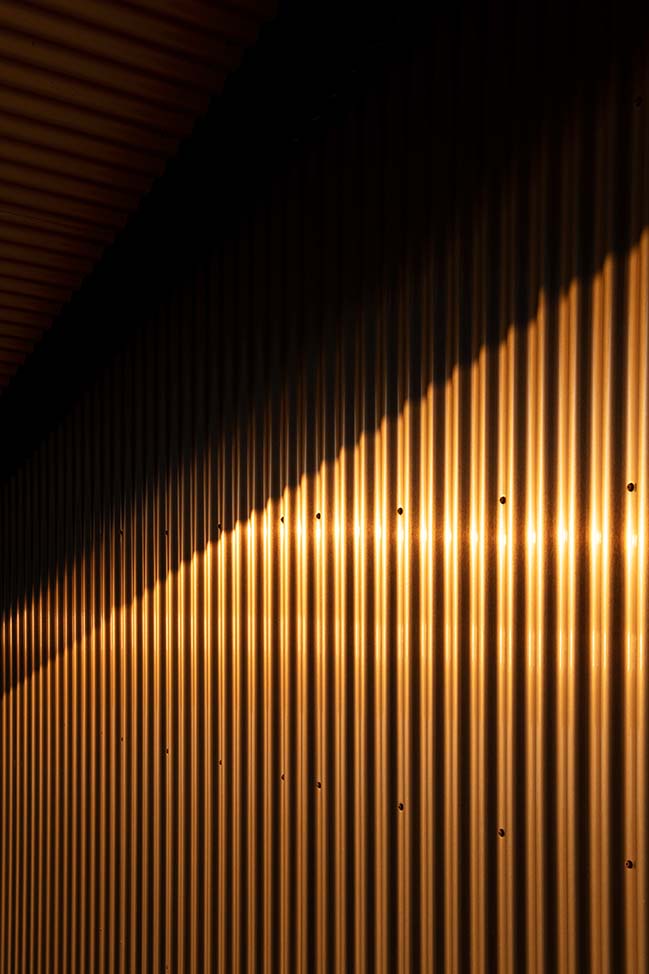
© IVAR KVAAL
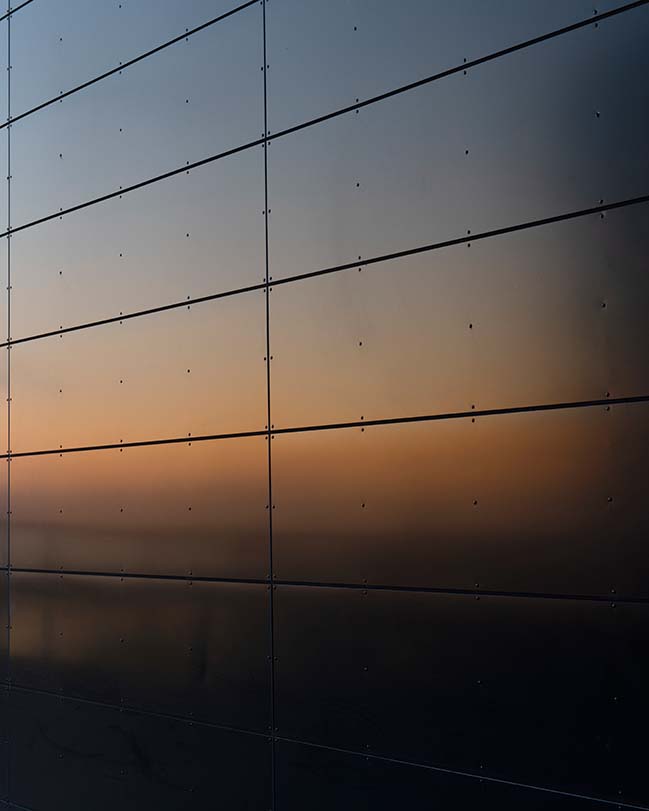
© IVAR KVAAL
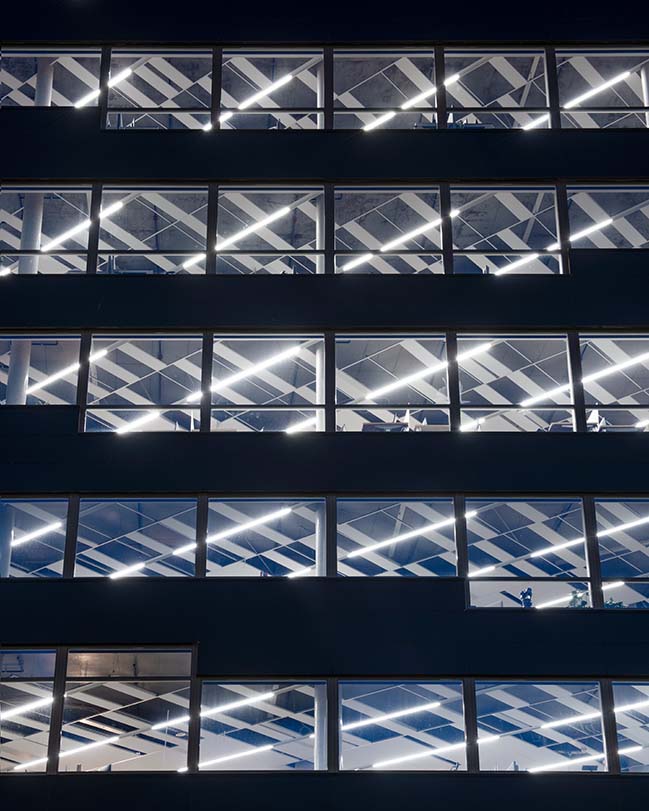
© IVAR KVAAL
YOU MAY ALSO LIKE: The world's first power-house hotel in Norway by Snøhetta
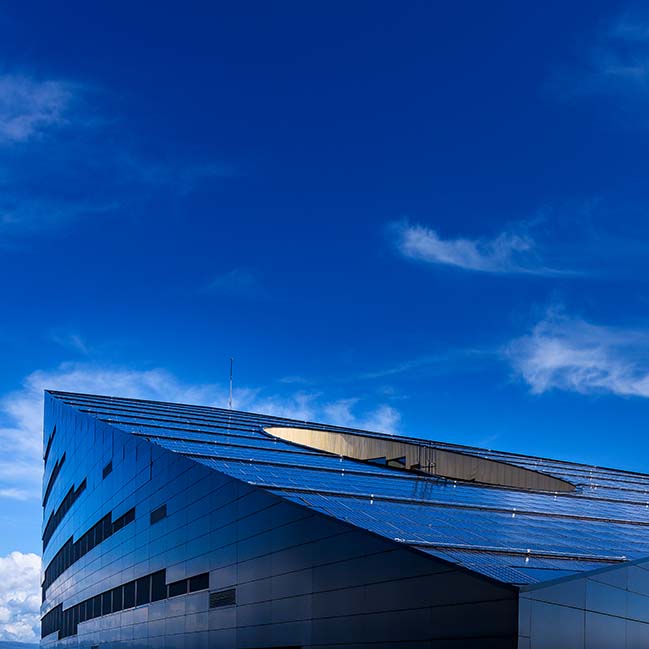
© Synlig.no
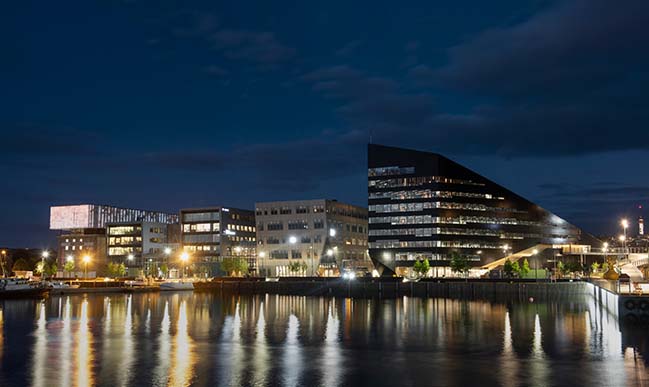
© IVAR KVAAL
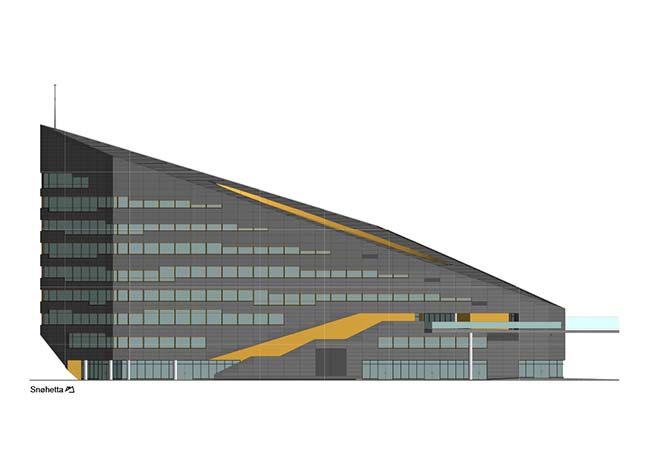
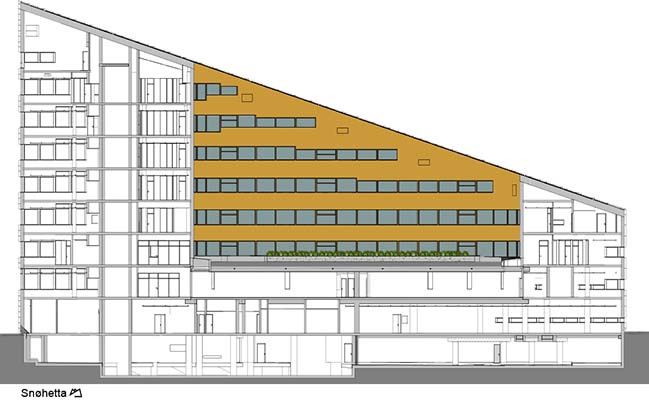
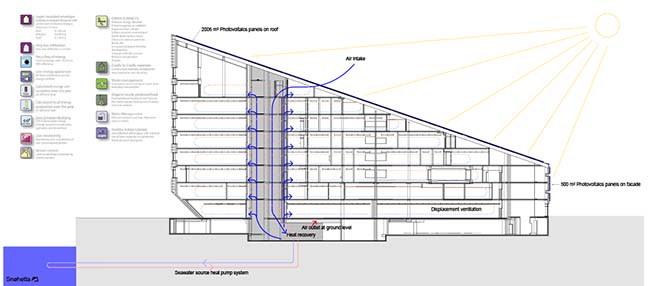
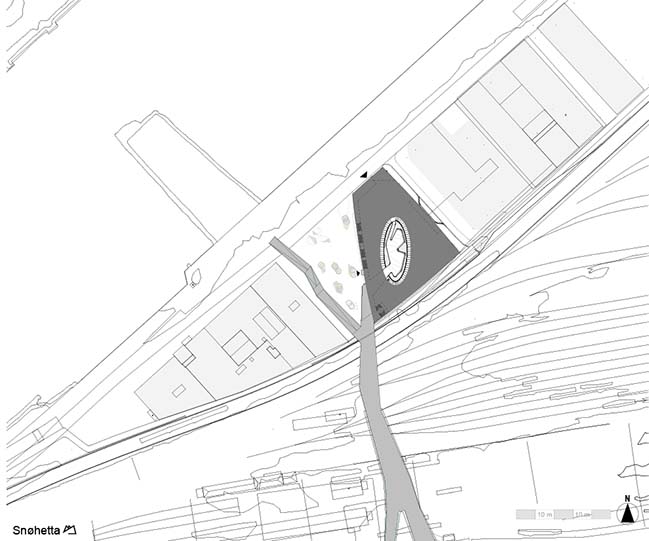
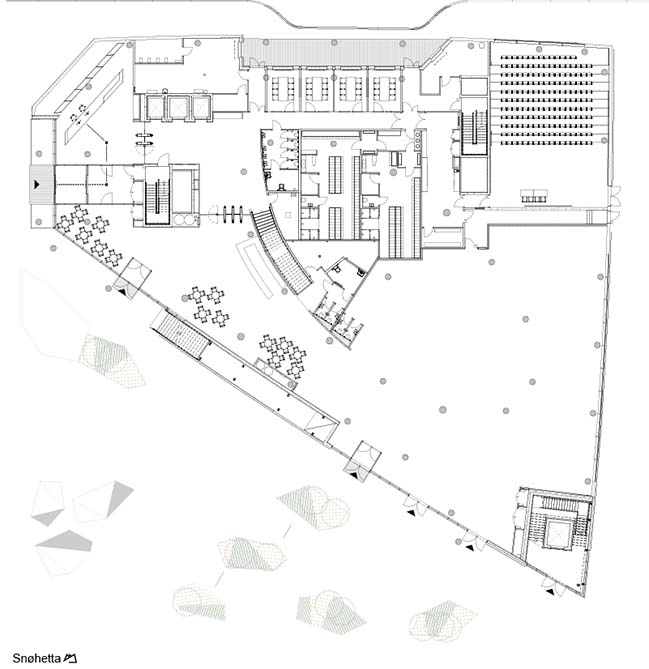
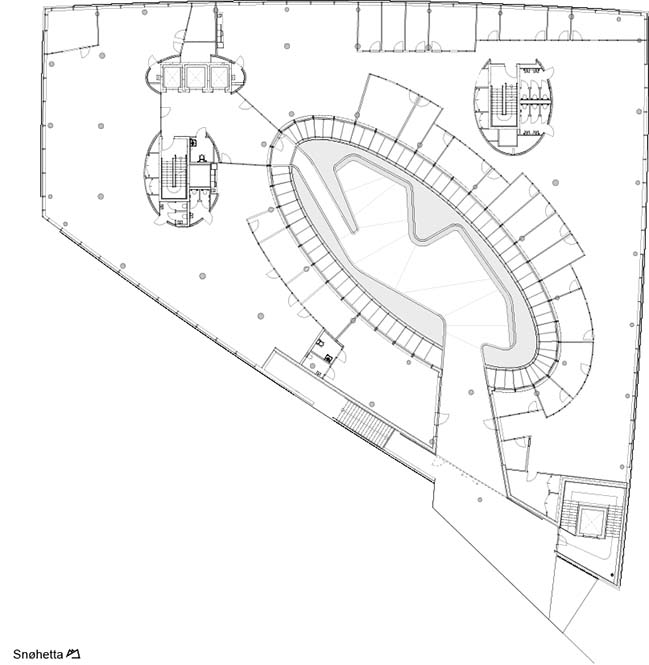
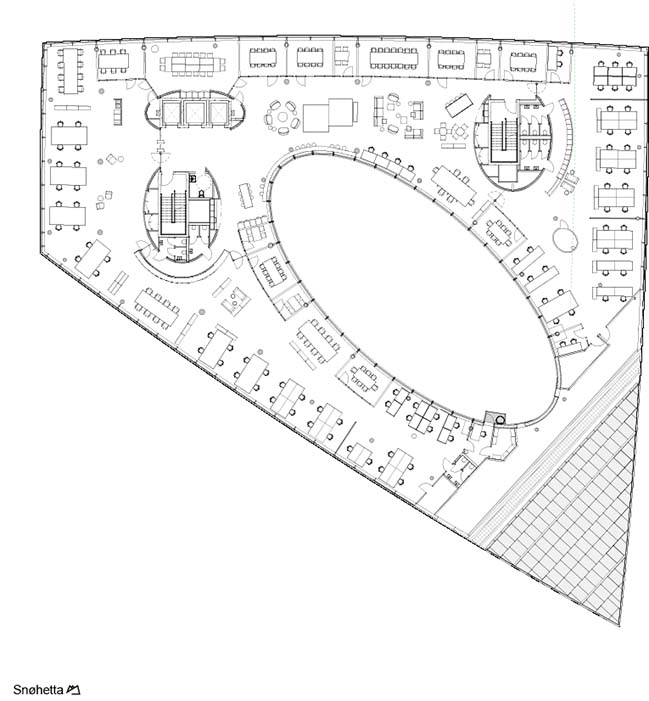
Snøhetta completes Powerhouse Brattørkaia - the World's Northernmost Energy-Positive Building
09 / 05 / 2019 Snøhetta Completes Powerhouse Brattørkaia - the World's Northernmost Energy-Positive Building...
You might also like:
Recommended post: Tainan Public Library by Mecanoo and MAYU
